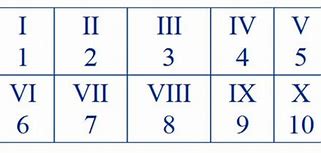
Steps after uninstalling WordPress
After you’ve uninstalled WordPress, there are a few crucial steps to optimize your website’s presence and security. Let’s look at how you can manage redirects and clean up any leftover files.
If you have a new website or page that you want your users to visit instead of the old WordPress site, setting up 301 redirects is essential. Here’s how to do it:
Remember, 301 redirects are permanent and inform search engines that your content has moved for good, helping preserve your SEO rankings.
Checking for leftover files
Once WordPress is uninstalled, you should check your hosting account for any remaining website files. Here’s what to look out for:
By completing these post-uninstallation tasks, you reduce the chances of security issues and keep your online presence tidy and professional.
What should I do next after uninstalling WordPress from cPanel?
Consider reevaluating your hosting needs or planning your next project. Whether transitioning to another CMS or upgrading your online presence, it’s a clean slate to seamlessly integrate fresh tools or platforms without legacy complications.
Step-by-step instructions on how to backup a site:
To maintain the SEO score, back up the site’s design and media files, such as the media files, plugins, and themes.
Find these in the wp-content folder. Back it up in a similar way to the website’s files.
Backing up the website will save all the hard work that went into creating it. Remember, it’s better to work smarter than to work harder.
Resolving errors after uninstallation
If you encounter any errors after uninstallation, the first step is to check whether all WordPress files have been properly removed. Some errors occur because files or database entries are left behind. Follow these steps:
Hello there, I had a site that i developed in html php and css, but a few days ago i tried to install Wordpress to see if the wordpress options would apear in the site but it didnt and i really dont want to make it all again in wordpress but the thing is i cant uninstall it, i just cant find where is the option to do it. If any of you guys can help me I will be very grateful.
You can completely uninstall WP from file manager which is on client area (not wordpress dashboard)
ok, so what i have to do inside the file manager exactly?
inside ht-doces. select WP related files. then click on delete aka recycle bin icom.
If you installed WordPress with the Auto Installer, you can head to the Auto Installer and then click one “Installations”. Then, next to the WordPress installation, click the “Delete” button. This will then remove the WordPress installation.
This topic was automatically closed 30 days after the last reply. New replies are no longer allowed.
Uninstalling WordPress might seem difficult, but it’s a process that you can undertake with some guidance. Whether you’re starting fresh, troubleshooting an error, or looking to reset your site for a new project, getting rid of the old WordPress installation is an essential step.
It’s important to understand what uninstalling entails—removing all the core files, databases, and associated content that’s specific to WordPress. When you do this, you’re essentially wiping the slate clean, which can be just what’s needed to move forward with a new vision for your website.
Before you proceed with the uninstallation, it’s crucial that you back up your content, especially the wp-content folder, which holds your themes, plugins, and uploads. Properly uninstalling WordPress requires a thoughtful process to ensure that you’re not leaving behind any clutter or unused databases.
How do I completely remove WordPress?
To completely remove WordPress, delete the WordPress files from your server, drop the associated MySQL database, and remove any user privileges in the database.
What happens when I uninstall WordPress?
When you uninstall WordPress, all files, content, and database entries are removed, effectively erasing your website. However, files or data not part of the WordPress directory or database remain unaffected.
How do I delete the WordPress app?
To delete the WordPress app from a mobile device, press and hold the app icon and select the uninstall or delete option. The process may vary slightly depending on your device’s operating system.
How do I uninstall WordPress locally?
Manual reinstallation
For a manual reinstall, you’ll handle the files directly, giving you more control over the process.
Always ensure that your wp-content folder remains intact, as it contains your themes, plugins, and uploads. Following these steps should help you achieve a clean reinstall and bring your WordPress site back to optimal performance.
Simplify WordPress with 10Web Skip and automate manual work with 10Web Managed WordPress Hosting. Optimize your WordPress website effortlessly.
Skip and automate manual work with 10Web Managed WordPress Hosting. Optimize your WordPress website effortlessly.
Erase the Database and Database User
After confirming the site’s database and database username, users can delete them. Go to the cPanel homepage, and select MySQL Databases.
A popup will appear asking for confirmation. It also notes that once deleted, the action is irreversible.
Follow the instructions in this article for deleting everything from the site. Select Delete, then Confirm.
Check if deleting is successful by searching the domain name in the browser. If it says ‘Error,’ then the website is now deleted.
In the file manager, go to public_html, then right-click the site’s folder name to delete. A pop-up confirmation box will appear. Click ‘Yes.’
To remove the domain name, access the “Add-on Domain.”
Delete everything, including the blog’s subdomain. This will help to keep the cPanel clean and organized.
But it depends on the users’ preference. It’s possible to retain it if you want to go back to blogging in the future.
Whatever the decision, keeping or deleting it will not affect the cPanel.
Important Note: Users must manually uninstall WordPress from cPanel if it was manually installed on the webserver. Do this by: (S)FTP access, access via web-based file manager, and SSH-based console access.
Reinstalling WordPress
Reinstalling WordPress can refresh your site and solve several issues. Whether you are dealing with a corrupted installation or want to start from scratch, the process can be straightforward using either an auto installer or doing it manually.
If your hosting service offers an auto installer, this is the most straightforward way to reinstall WordPress. It’s a feature that automates the process, minimizing the steps you have to take.
By using this feature, you don’t have to worry about downloading and uploading files – the tool takes care of that for you. It’s especially convenient if you’re not familiar with more technical aspects like working with FTP clients or managing databases.
The Ultimate Guide on How to Uninstall WordPress from cPanel
If there was an issue with the cPanel or it was installed in the wrong path, removing the WordPress installation is crucial. The instructions for uninstalling a WordPress site from cPanel is simple.























